KYOTO, Japan — The caller read out the numbers at a speed evoking an auctioneer on fast-forward, each multidigit figure blurring into the next.
日本京都——念题人以快进的速度念出数字,让人想到拍卖师,每一串的长串数字都连到了一起。文章源自西贝博客-https://qinghe.me/an-abacus-makes-it-look-almost-easy.html
Within seconds, Daiki Kamino’s right arm shot up in the air, triumphant. Not only had he heard every number, but he also had tabulated them and arrived at the correct, 16-digit sum: 8,186,699,633,530,061.文章源自西贝博客-https://qinghe.me/an-abacus-makes-it-look-almost-easy.html
短短几秒钟,上野大辉(Daiki Kamino,音)的右手便高高举起,一副得意的样子。他不仅听到了每个数字,还把它们排列得出正确的16位数字之和:8186699633530061。文章源自西贝博客-https://qinghe.me/an-abacus-makes-it-look-almost-easy.html
He did it all on an abacus.文章源自西贝博客-https://qinghe.me/an-abacus-makes-it-look-almost-easy.html
他全都是用算盘算的。文章源自西贝博客-https://qinghe.me/an-abacus-makes-it-look-almost-easy.html
从小培养孩子乐趣
For this bit of mathematical virtuosity, Daiki, 16, a high school student from Hiroshima, Japan, was crowned champion in the dictation event at an annual tournament in Kyoto, where competitors pull off dazzling arithmetic feats simply by sliding tiny beads along rods set within modest wood frames.文章源自西贝博客-https://qinghe.me/an-abacus-makes-it-look-almost-easy.html
凭借这般高超的数学技巧,16岁的日本广岛高中生大辉在京都举行的一年一度的听心算赛事中夺冠。比赛中,选手只需将小珠子沿着木框内的木轴滑动,就能完成令人眼花缭乱的算术壮举。文章源自西贝博客-https://qinghe.me/an-abacus-makes-it-look-almost-easy.html
Daikiis rangy and slightly awkward in that teenage boy kind of way. He loves Japanese comics known as manga, along with fantasy role-playing video games. But for the last eight years, he has spent up to three hours a day practicing on the abacus, or “soroban” in Japanese.文章源自西贝博客-https://qinghe.me/an-abacus-makes-it-look-almost-easy.html
大辉身材瘦长,略带青涩的少年模样。他喜欢日本漫画和幻想角色扮演电子游戏。但过去的八年里,他每天花三个小时练习珠算,算盘的日语发音是“soroban”。文章源自西贝博客-https://qinghe.me/an-abacus-makes-it-look-almost-easy.html
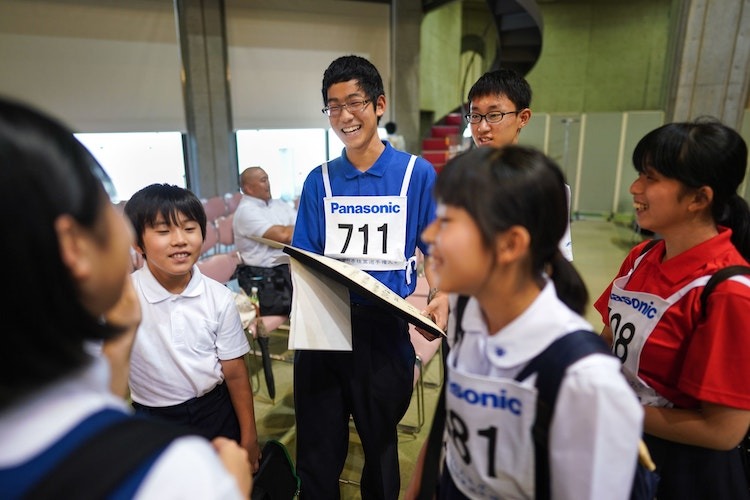 文章源自西贝博客-https://qinghe.me/an-abacus-makes-it-look-almost-easy.html
文章源自西贝博客-https://qinghe.me/an-abacus-makes-it-look-almost-easy.html
“There are times when I’m not in the mood,” he said. “But I start enjoying it once I start getting the right answers.
“有时候我没有兴致,”他说。“但是一旦开始得到正确答案,我就开始享受它。”
“I listen and move my fingers and repeat the numbers in my head,” he added, trying to explain how he could possibly do what he does. “As soon as I hear the unit like trillion or billion, I start to move my fingers.”
“我听着,移动手指,在脑中重复数字,”他接着说,试图解释他是怎么做到的。“一听到万亿或十亿这样的单位,我的手指就开始动。”
About 43,000 students take advanced soroban lessons at private schools in Japan, according to government estimates, although soroban associations say the number is higher. Many practitioners sit for exams to attain advanced qualifications known as kyu or dan, which are akin to belts in martial arts. Those who excel compete in national tournaments.
据日本政府估计,日本私立学校约有4.3万名学生在上珠算高级课程,不过珠算协会表示,实际数字可能更高。许多人参加考试是为获得被称为“级”(kyu)或“段”(dan)的高级资格,这类似于武术中的段位。表现出色的选手可参加全国比赛。
国家重视这项运动
Showing the discipline of elite athletes, more than 800 contestants from across Japan, and a few from South Korea, gathered in an auditorium in Kyoto earlier this month to put their skills to the test.
本月早些时候,来自日本各地的800多名选手和一些来自韩国的选手聚集在京都一座礼堂,像优秀运动员一般接受挑战。
The youngest competitor was 8, the oldest 69. Multiplying and dividing numbers with as many as 16 digits, they sent rapid clickety-clacks rippling across the room like a summer downpour.
最年轻的选手8岁,最大的69岁。他们用多达16位的数字进行着乘除运算,发出快速的咔嗒咔嗒声,像夏天的倾盆大雨在房间里荡漾。
For some events, the contestants dispensed with the physical soroban and mentally pictured the beads as they completed long pages of calculations.
在一些比赛中,参赛者不用实体算盘,而是通过在脑中想像算珠,完成大量计算。
One winner, a 20-year-old college student, broke his own Guinness World Record by adding in his head 15 three-digit numbers that flashed on a large screen at the front of the auditorium — all in 1.64 seconds.
一名20岁的大学生获胜者打破了自己创下的吉尼斯世界纪录,他对礼堂前大屏幕上闪现的15个三位数心算求和——总共只用了1.64秒。
In the late 1970s, education officials, eager to bolster the population’s scientific and technological skills, significantly cut back on soroban instruction.
20世纪70年代末,教育官员急于提高国民的科学技术技能,大幅削减了珠算教学。
Today, textbooks mandated by the education ministry include only a couple of pages on the soroban. Students receive basic lessons for just two hours a year in third and fourth grade.
如今,文部省指定的教科书中只有几页与珠算有关。学生只在三四年级每年上两小时的基础课程。
But advocates for soroban instruction are pushing the ministry to introduce the old-school devices earlier.
但珠算教学的倡导者正在推动文部省更早地引入这种老式工具。
“For little kids it’s so easy to visualize numbers on the soroban,” said Yasuo Okahisa, deputy director of the League for Soroban Education in Japan, host of the Kyoto tournament.
“对小孩子来说,在算盘上看到数字很容易,”此次京都大赛主办方、日本珠算教育联盟副会长冈久康夫(Yasuo Okahisa,音)说。
“Unlike the computer or calculator, you have to watch the movement of the beads with your eyes, and then think with your brain and make a move with your fingers,” said Okahisa, as he slid the beads on an oversize abacus in the league’s office in Kyoto. “It’s a very foundational learning process.”
积极的社会影响
“不像计算机或计算器,你得用眼看算珠的移动,再用脑思考,然后移动手指,”冈久说,他在联盟位于京都的办公室里拨动着一个超大算盘上的算珠。“这是很基础的学习过程。”
The soroban is made up of columns of beads, with each column standing for a place value like ones, hundreds, thousands and so on. One bead on the top of each column is worth five, while four on the bottom of each column are worth one each. Students add, subtract, multiply and divide by sliding the beads up and down.
算盘由一串串算珠组成,每一串代表一、百、千等数值。每串最上面一颗代表5,下面4颗分别代表1。学生通过上下拨动算珠进行加减乘除运算。
Some educators say the main reason for teaching soroban is to preserve traditional Japanese culture.
一些教育者表示,教授珠算的主要是为了保存日本传统文化。
But Yukako Kawaguchi, 44, who runs one of the approximately 6,500 private soroban schools nationwide with her husband, Yoshiharu Kawaguchi, 47, said those who study the soroban intensively develop a sense of achievement.
但44岁的川口有佳子(Yukako Kawaguchi,音)称,深入学习珠算会得到一种成就感。她和47岁的丈夫川口吉春(Yoshiharu Kawaguchi,音)开着一所私立珠算学校,这样的学校在全日本有大约6500所。
On a recent afternoon during the first week of summer vacation for Japanese schoolchildren, about 30 students showed up at the school in east Tokyo.
不久前的一个下午,在日本小学生暑假第一周,大约30名学生来到位于东京东部的这所学校。
A group of 5- to 9-year-olds crammed into a compact room, pinching beads between their thumbs and index fingers, their heads bent over worksheets filled with calculations of escalating difficulty.
一群5至9岁的学生挤在一个小房间里,拇指和食指之间夹着算珠,低头看着一张张运算难度不断升级的表格。
Yukako Kawaguchi sat at a small desk at the front of the room. Students lined up in front of her for help.
川口有佳子坐在房间前侧一张小桌旁。学生在前面排队请求指点。
家长的足够引导
Upstairs, Yoshiharu Kawaguchi worked with the school’s most advanced students, two elementary-age girls who were preparing for the Kyoto competition.
楼上,川口吉春在帮助学校里最拔尖的学生,两名准备参加京都比赛的小学女生。
For 2 1/2 hours, he set them on timed drills. Their foreheads damp with sweat, they ran through long pages of multiplication and division, adding columns of figures and finding the square and cube roots of numbers with decimals out to the trillionth place, clicking their soroban beads at astonishing speeds.
在两个半小时里,他让她们进行计时练习。她们额头上挂着汗珠,快速进行大量的乘除运算,将串串数字相加,求得数字的平方根和立方根,小数点精确到万亿位,以惊人的速度拨动手中的算珠。
Niko Shibayama, 11, who has been studying soroban since kindergarten, used both her thumbs to click the beads, rat-a-tat. When she put the abacus aside to work on mental math, she swirled her pencil in the air and bobbed her head as if she were listening to music.
11岁的柴山仁子(Niko Shibayama,音)自幼儿园起就一直在学习珠算,她用两根拇指拨动算珠,只听得砰砰作响。当她把算盘放到一边,做心算数学题时,她在空中旋转着铅笔,脑袋上下摆动,就像在听音乐一样。
“It’s fun,” said Niko, who spends two afternoons and all morning Saturday at the Kawaguchis’ school. “I am pretty competitive. So I never want to lose to anyone else.” On long car rides, she likes to add up license plate numbers in her head.
“挺好玩,”仁子说,她每周有两个下午和整个周六上午在川口夫妇的学校里度过。“我很有竞争力。我不想输给任何人。”遇上稍久的车程,她喜欢在脑中把车牌号码加起来。
At the Kyoto competition, Niko was committed but calm. During the dictation events, she tried to keep up with the caller but quickly lost track. “I could not even understand what they were saying,” she said. “It all just sounded like ‘wah wah wah wah wah.’ ”
在京都的比赛中,仁子专注而镇定。听心算比赛中,她努力想跟上念题人,但很快落下。“我甚至不理解他们在说什么,”她说。“听上去是一片’哇哇哇哇哇’。”
Her mother, Rutsuko Shibayama, 44, thought Niko’s ease with competition might help her take strenuous school entrance exams in stride. But she was more happy her daughter had found an extracurricular activity she loved.
她的母亲、44岁的柴山路得子(Rutsuko Shibayama,音)认为,仁子轻松应付比赛,可能会有助于她从容应对繁重的入学考试。但更让她高兴的,是女儿找到了自己喜欢的课外活动。
“I learned through Niko that the more you like something, the better you will get,” Rutsuko Shibayama said. “I am really grateful that she found something that she’s passionate about.”
“仁子让我懂得,什么事情你越是喜欢,就会做得越好,”柴山路得子说。“我真的很感激,仁子找到了她钟爱的事情。”
更多双语阅读的相关文章,请看:


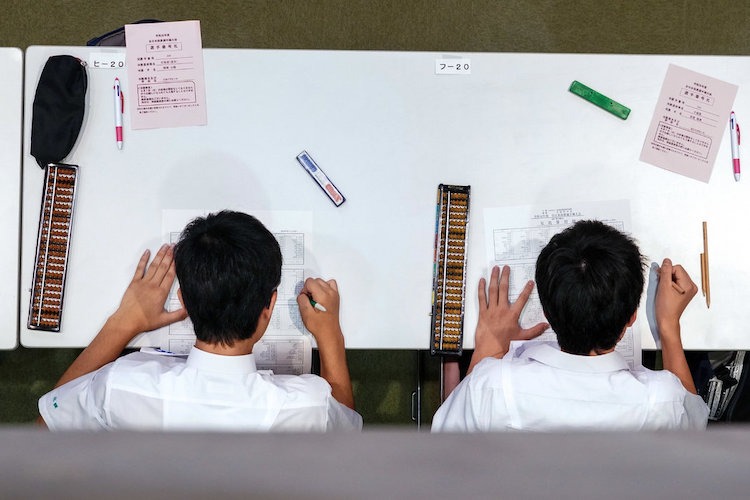
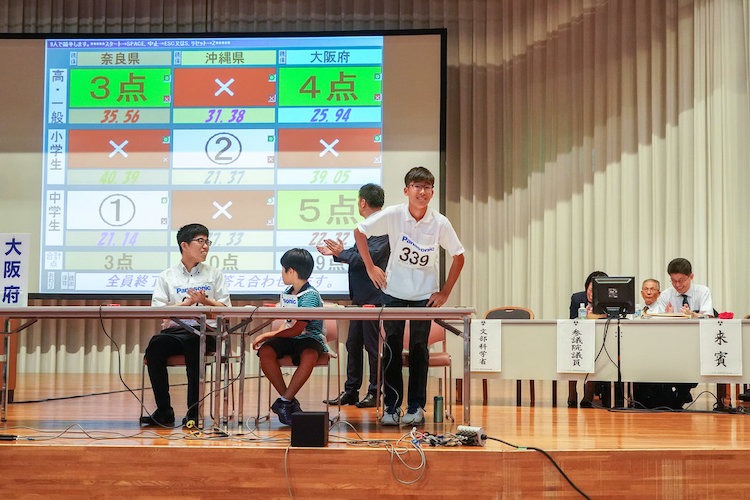
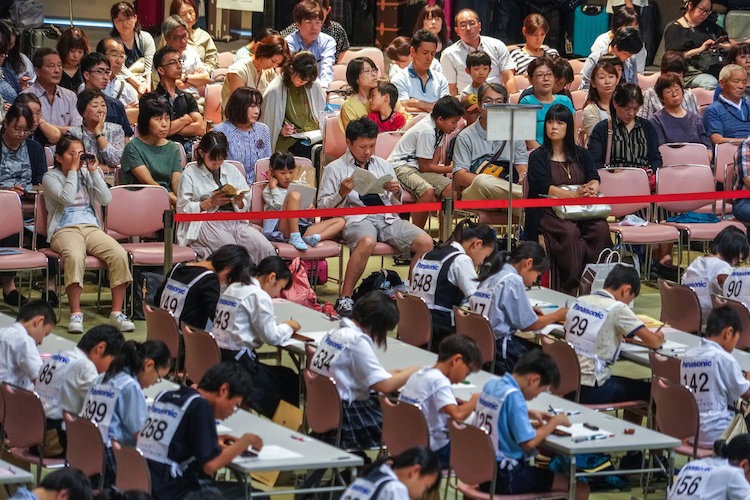
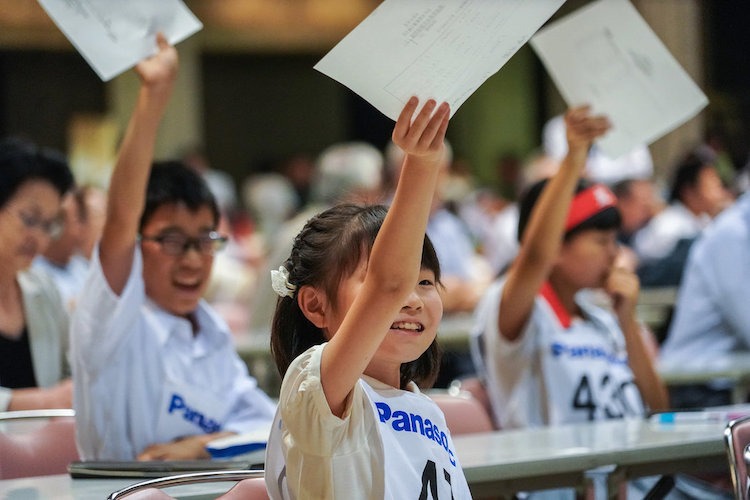
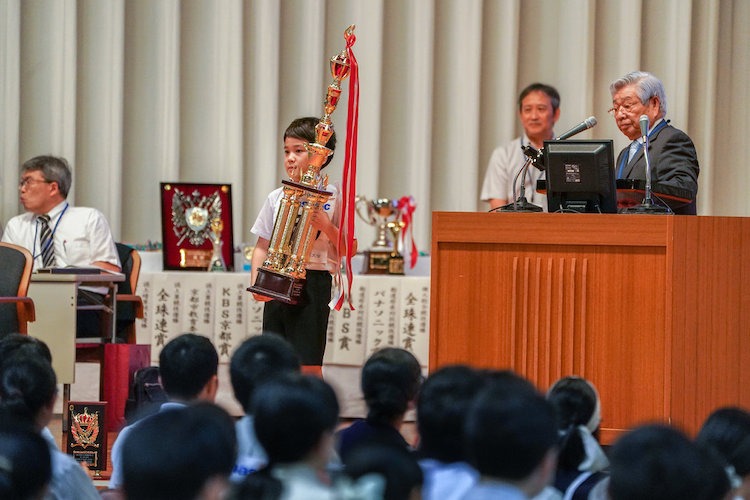
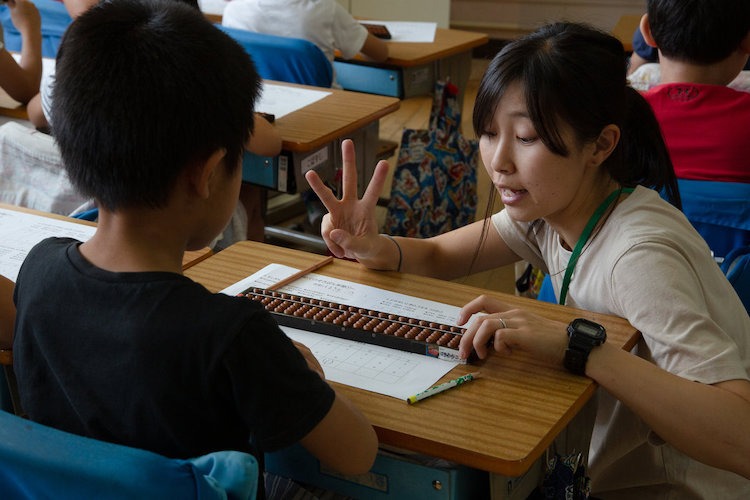
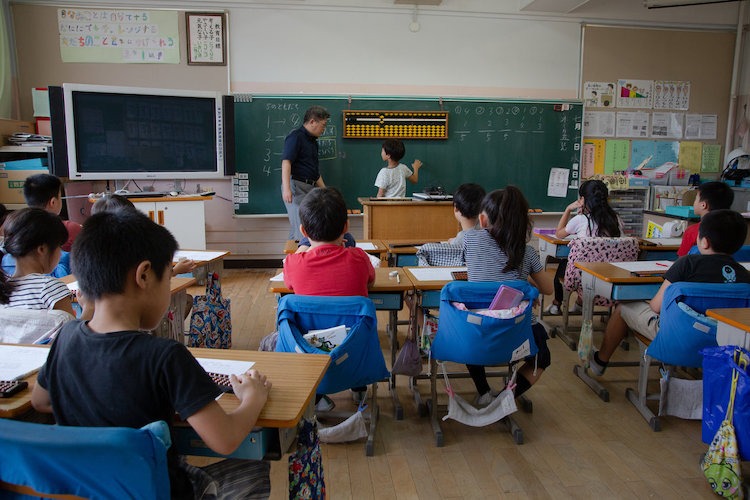

评论